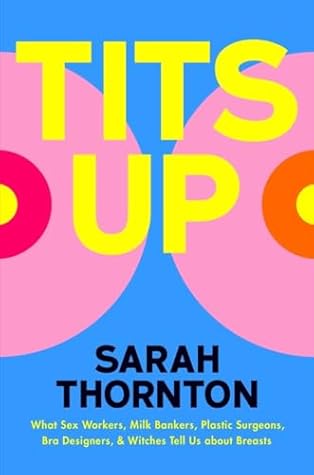More on this book
Community
Kindle Notes & Highlights
Read between
May 24 - May 28, 2024
The erotic breast developed alongside the popularity of wet-nursing in France during the Renaissance, about six hundred years ago. The delegation of breastfeeding to wet nurses enabled the aristocracy to have more children (lactation can suppress ovulation) and allowed a birthing mother’s breasts to retain a more youthful shape. Unclaimed by infants, breasts could become the possession, fetish, and status symbol of husbands and lovers.
While 82 percent of college-educated men made “mouth contact” with their wife’s breasts during foreplay, only 33 percent of men without high school diplomas did the same.12 When lesbians were surveyed in a related report, a mere 24 percent reported caressing their partner’s breasts, and yet 95 percent of this “female homosexual” group achieved orgasm—a much higher proportion than the women engaged in heterosexual activity.13 These data points suggest that breast-related sexual activity is a learned behavior of greater appeal to men.
The English language boasts over seven hundred expressions for female mammary glands, most of which are spoken by men.
Gender is ever more about self-presentation and the visible top halves of our bodies. This is one reason why “top surgery” is often the only surgery undergone by a trans man (whose physical destination is masculinity) and why trans women often delight in the burgeoning breasts that result from taking estrogen. Put another way, the hierarchy between so-called primary and secondary sexual characteristics is in the process of being overturned.
For as long as breasts are disparaged as silly boobs, we will remain the “second sex.”
Feminist theories of the male gaze emerged from film studies, not live performances where the women on stage could actually stare back.
“Most customers think of us as objects, so when we focus on them, they’re confronted with our humanity.”
disgust is a privilege. Worse still, it gets in the way of building a feistier political movement that is in touch with the socioeconomic ground upon which all sorts of women walk and march in protest.
When I asked her about being a nanny and a stripper, Barbie said, “They’re not as different as you think. Drunk men are children.”
“Tolerance is oppressive. It’s not the same as acceptance,”
I think the most fundamental issue inhibiting women’s autonomy—our right to choose what we do with our bodies—is the state’s policing of sex work. If some women can’t sell their bodies, then none of us actually own our bodies.
Schiebinger’s account of Linnaeus reveals how breasts, not vaginas, are the symbolic hub of biological determinism. She pinpoints a key moment when God-given gender roles were converted into natural ones with social destinies. With Linnaeus’s reorganization of the animal world, breasts became visual evidence of women’s intellectual inferiority and innate subservience.
Second, the world’s biggest buyer of breast milk substitutes is the US government. It is distributed by the Department of Agriculture through their Women, Children’s and Infants offices rather than the Department of Health and Human Services. Is this part of a legacy of treating women as chattel or, for that matter, cattle?


